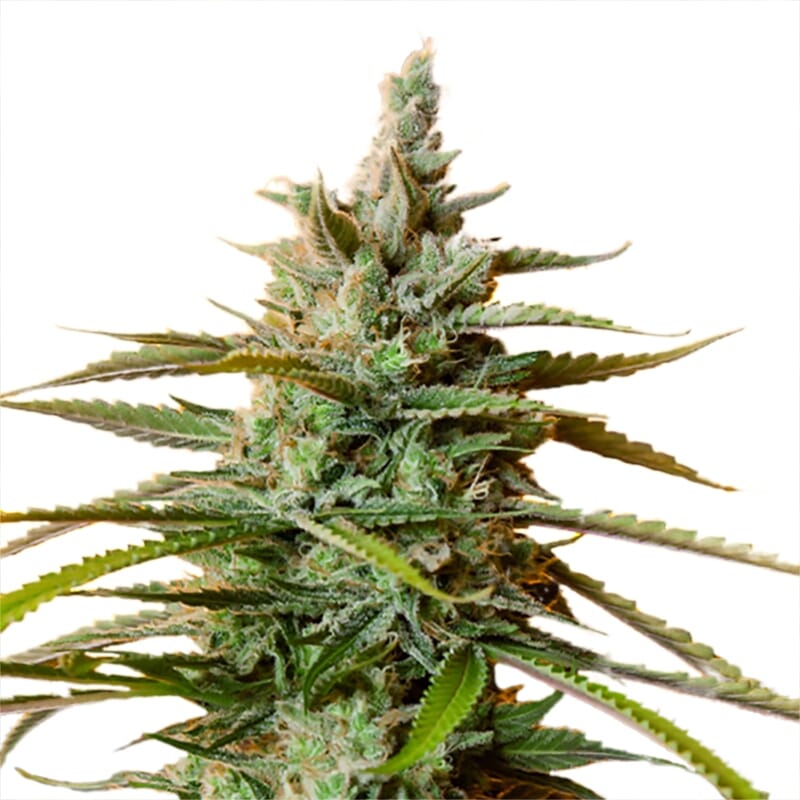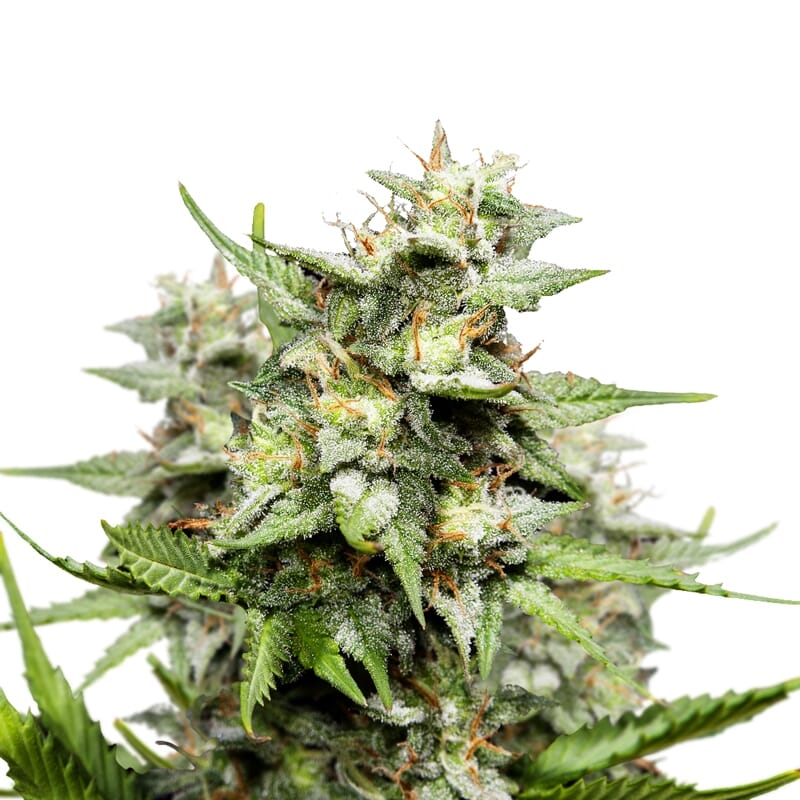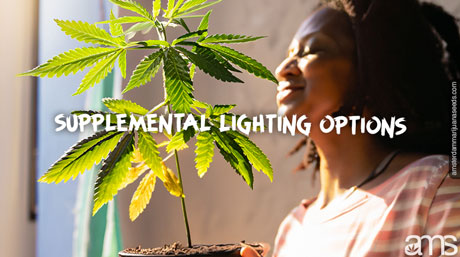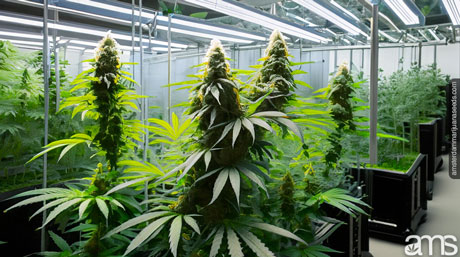Illuminating for Optimal Bud Production
Increasing your cannabis plants’ yield can be achieved by skillfully controlling their exposure to light. As the main driver of photosynthesis, the process by which plants generate their food, light is integral to their growth and development. A plant’s leaves contain a pigment called chlorophyll that absorbs light energy. This energy is then employed to catalyze a reaction between water and carbon dioxide, forming the carbohydrates that nourish the plant. This photosynthetic process is closely linked to the light intensity received by the plant, alongside several other influential factors. Hence, by managing your plant’s light exposure, you’re essentially influencing the amount of nutrients it can produce for itself.
The use of reflective materials
With the crucial role of lighting well-established, the logical next step would be to flood your plants with as much light as they can absorb. However, an alternative strategy, which can significantly enhance the benefits without any additional electricity consumption, involves the use of reflective materials. By incorporating these reflective materials into your grow space, you can potentially enhance your existing light by up to 30%, propelling your plants towards improved health and increased size.
The Key Role of Lighting in Plant Growth
Effective reflection on the walls adjacent to your plant can recapture the light from your sources and redirect it, towards your plants, preventing it from being absorbed and wasted by the walls. Additionally, reflective walls can alleviate the issue of ‘dark spots’ on your cannabis plants, areas that light does not reach. Given that light intensity diminishes as the distance it travels increases, having reflective walls in place ensures that any light that would have been lost while traveling from the source to the plant is now redirected for the plant’s benefit.
However, for a reflective surface to work optimally, it is necessary for your plants, to be situated within a space small enough for the reflected light to reach them. If the plants are located in the middle of a spacious room, the benefits of reflective walls would be negligible.
Reflective materials come in a broad array of types, offering diverse benefits. For example, grow tents, with their specifically designed ‘walls’, are known to reflect a substantial amount of light, back to your plants.
Mylar is a popular choice for a growing room’s reflective material due to its ability to reflect over 95% of the light that strikes its surface. Affordable and available in 1mm or 2mm thick sheets, Mylar can be easily adhered to your walls. An enhanced version of Mylar, known as Foylon, features a reinforced laminate coating that resists creasing or tearing. Another variant C3 anti-detection film, is designed to prevent heat escape, making it an ideal choice for indoor cultivation during winter months. However, it should be used with caution during summer months when plants require ample ventilation.
Reflective Materials: An In-Depth Analysis
Another excellent choice for reflective material is flat or matte white latex paint, as it provides 85-95% light reflectivity. Economical and highly effective, it doesn’t create issues like air pockets or hot spots. As the white paint absorbs heat without reflecting it, back into the room, it aids in maintaining a cooler environment compared to other reflective materials. It’s also easy to maintain, as you can simply wipe it down for cleaning. While glossy paint might seem like a logical choice, the matte version is preferable. In some cases, paint labels even provide details regarding their reflectivity levels, helping you choose the one with the highest reflectivity. Although there are other reflective materials available, such as panda or tin foil, they don’t offer the same level of effectiveness.
Maximizing the potential of reflective materials requires adherence to certain guidelines. When installing these materials on the walls, ensure they lie flat against the surface to prevent hot spots and reduce reflectivity. Avoid creases or wrinkles in the material, as they can also diminish the overall reflective effect. Sharp corners are less reflective than smooth curves, so take care to create a uniform surface. One of the best textures to reflect light and reduce hot spots is the hammered style texture. Cleaning your reflective materials regularly is also vital, as accumulated dirt can make them less reflective.
Investing in reflective materials provides a straightforward and cost-effective way to amplify the light available to your plants. A worthy addition to any grow space, reflective materials can facilitate higher plant growth and boost bud production, thus maximizing your yield.
Digging Deeper into Reflective Materials
Each reflective material type has its unique characteristics, and understanding them can help you make a well-informed decision that suits your specific needs.
Mylar
Mylar, a highly reflective polyester film, stands as one of the most sought-after options in the world of indoor plant growing. Its popularity lies in its ability to reflect more than 95% of the light. Mylar is affordable, readily available, and comes in 1mm or 2mm thick sheets. It’s relatively easy to install by adhering to the walls of your grow room. However, it’s important to be mindful that it can create hot spots due to wrinkles or folds, requiring careful installation to flatten out any creases.
Foylon
Foylon is an improved version of Mylar, boasting higher durability thanks to its reinforced laminate coating. This unique feature makes it less prone to tearing or creasing, ensuring its reflective efficiency remains intact over a longer period. Despite being a tad pricier than Mylar, many growers find the added investment worthwhile for the long-term benefits.
C3 Anti-Detection Film
C3 Anti-detection film, another Mylar variant, is specifically designed to trap heat, making it an excellent option for winter indoor cultivation. This type of Mylar assists in maintaining the grow room’s temperature by reducing heat escape. Nevertheless, this heat-trapping feature can potentially backfire during summer months, as plants require ample ventilation to avoid overheating. Therefore, using C3 anti-detection film demands careful temperature management to avoid harming your plants.
White Latex Paint
If you’re seeking a more permanent solution, flat or matte white latex paint can be an excellent alternative. With its 85-95% light reflectivity, it is almost as effective as Mylar. Moreover, unlike Mylar, it absorbs heat without reflecting it, back into the room, helping maintain a cooler grow space. This type of paint is easy to clean, affordable, and doesn’t produce hot spots or air pockets. Despite the temptation, avoid using glossy paint as it can create glare and isn’t as effective in light reflection.
Effective Use of Reflective Materials
While choosing the right reflective material is essential, understanding how to use it effectively is equally crucial. Reflective materials should be installed so they lie flat against the surface, avoiding the formation of hot spots and ensuring maximum reflectivity. Also, periodic cleaning is crucial to maintain their reflectivity as accumulated dirt or dust can diminish their effectiveness.
Reflective materials are a low-cost, high-return investment for indoor growers. By implementing these materials in your grow space, you can significantly enhance the available light for your plants, leading to stronger growth and increased bud production. With the right choice of material and correct usage, you can optimize your yield without a significant rise in energy consumption.
FAQS: Reflective materials
How can I increase my cannabis plant yield with light?
Light is essential for photosynthesis, which fuels plant growth. You can maximize yield by optimizing light exposure and using reflective materials in your grow space to enhance light distribution by up to 30%.
What are the best reflective materials for indoor cannabis cultivation?
Popular options include Mylar, which reflects over 95% of light, and flat white latex paint, which offers 85-95% reflectivity. Both effectively increase light exposure, but Mylar may create hot spots if not installed smoothly.
How do reflective materials benefit cannabis growth?
Reflective materials redirect wasted light back onto your plants, eliminating dark spots and boosting light intensity, which promotes better growth, stronger stems, and higher bud production without extra energy costs.




















